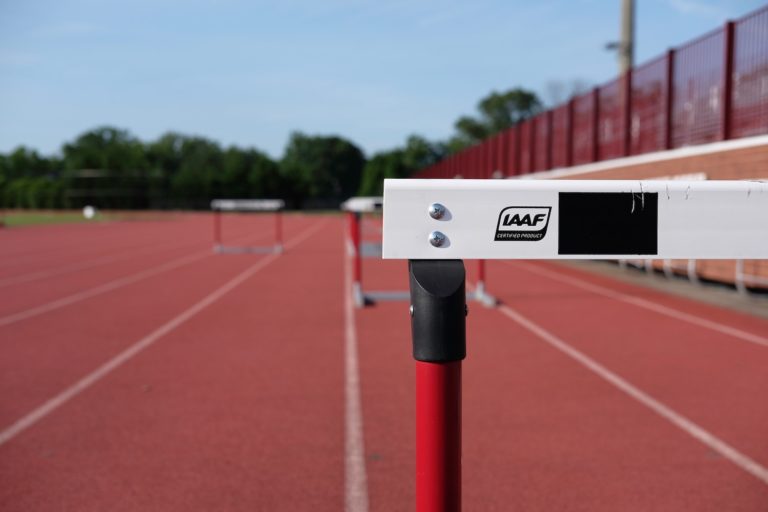
Inside Lane Bryant’s Big Bet on Digital
The shift to digital is no longer just a conversation point or something brands can plan to tackle over the next five to ten years. It’s now highly urgent and top of mind for every retailer.
During a year in which ecommerce sales increased 44%, Ascena Retail Group, parent company of Lane Bryant, Ann Taylor and Loft, felt this urgency to go digital-first deeply.
What Set Ascena Retail Group Down the Path to Digital
Ascena’s transformation started to take shape over the past few years as they saw increasing competition from emerging digitally native brands and new online platforms that were capturing the already fleeting attention of shoppers. This shift led Ascena to realize that the way they invested some of their time and resources needed to change to support their mission of providing all women with fashion and inspiration to live confidently everyday, wherever they are.
Specifically, they realized that the traditional approach, which siloed brick-and-mortar from online, did not make it easy or natural for customers to discover, evaluate and buy in a digitally-driven world. To win shoppers’ ongoing favor, they needed to evolve. This point became even more stark when the pandemic hit, stores were forced to close across the country and digital traffic and sales spiked overnight.
According to Eric Gohs, VP of Performance Marketing at Ascena Retail Group: “We needed leapfrog thinking to provide longevity for the business. We had to acknowledge that even once the pandemic lifts and stores re-open to more normalized traffic, our customer’s behavior has changed. She expects more from her digital experience and it influences her shopping both online and in-store. It became clear that we needed to make a big bet on our online experience to continue to grow.”
Embracing a New Mindset for Digital-First Retail
With the shift to digital top of mind, Ascena’s team determined that the typical mass marketing formula of the store-first era would no longer work. Instead, they would need a strategy that was inherently more personal, tailored to each shoppers’ preferences around everything from the products they buy to when and where they like to engage.
They needed to embrace a personal commerce approach — one that allowed them to deliver authentic, always-on experiences to meet each individual shopper whenever she wants and wherever she is.
Unlike scaling stores, which requires up-front fixed investments, digital is about how well you understand data, apply it quickly and iterate off of what you learn. And you do this by giving that intelligence to people who can activate customer-facing communications to create the best experiences possible.
Ascena recognized the importance of this strategy, but encountered a familiar challenge along the way: It was difficult and resource-intensive to understand and deploy the data they had at scale. Because of that, their brands’ ability to communicate with customers quickly, and with the curated experiences they expected, was limited.
This situation became one of the force functions to reorganize Ascena’s brands for a digital future.
Lane Bryant’s Path to Make Digitally-Led Personal Commerce a Reality
Lane Bryant is one of the Ascena brands successfully reorganizing for a digital future to deliver superior personal commerce experiences. To achieve this goal, Lane Bryant has made it a company mission to create high-quality experiences for their shoppers online while increasing the speed and efficiency with which they do so. This crystalized under a newly minted set of objectives, which required putting many organizational shifts and technology upgrades into motion:
1) Communicating with shoppers like the unique individuals they are
Mass marketing designed to drive foot traffic doesn’t translate in the digital world. In the world of online shopping, consumers have more information than ever at their disposal to find the best product for them. These preferences give retailers valuable data to create an amazing shopping experience.
As Gohs puts it: “Our bet was that personalization would drive an increase in revenue and improve our operating margin as we looked to bring intelligent engagement to as many customer touchpoints as possible.”
With the advancement in real-time data and machine learning, Lane Bryant can immediately design a tailored experience for each shopper, like only showing her highly rated products in the category and price range that suits her and even styling likely options to help her complete the look. And as shoppers engage more and more, Lane Bryant can continue to get more personal by showing curated offers, recommendations and content that suit each one’s affinities and lifestyles.
2) Adopting systems built for intelligence to power dynamic, real-time personalization
In a store-first world, customer data is limited and transactional. Brands maintain purchase data and basic demographic data in CRM systems, but they are disconnected from the digital world, which results in shoppers showing up as shallow and static representations of themselves. This was sufficient in a world of mass marketing, but doesn’t cut it when retailers have access to technology that can build a dynamic view specific to each shopper that predicts the next set of recommendations and experiences she needs to discover and buy. Consumers are now surrounded by platforms that cater to their every click and impression, and they expect the same from the brands they shop regularly.
To deliver on this imperative, Lane Bryant unified its toolset to reduce cost and redundancies across the technology stack. Specifically, they prioritized Bluecore as the core audience creation and activation platform for email, onsite and paid media to make the vision of intelligent, coordinated engagement real. Moving to a system like Bluecore that’s built for intelligence and can trigger, predict and automate every campaign that shoppers interact with helped Lane Bryant dramatically simplify their workflows. In turn, this provides the foundation their team needs to deliver highly curated and compelling experiences for individual shoppers at scale.
“With this unified solution, we put the relevant data in the hands of our teams, which is essential, as they now have the ability to deploy personalized 1:1 communications in hours as opposed to days, empowering them to connect with customers with less friction and deliver on the promise of personal commerce,” Gohs shares.
3) Optimizing for retention and customer lifetime value, not just acquisition
In the hard-to-measure world of mass marketing, campaign performance is easiest to understand in terms of new shoppers. But that has led to a situation in which the majority of retailers are activating less than 10% of their subscriber base and continuing to spend more on acquiring new shoppers instead of driving repeat purchases from existing customers.
With the new ability to scale 1:1 personalization to every shopper, Lane Bryant could focus on activating more of their subscriber base and increasing repeat purchases, purchase frequency and cart sizes. Instead of ending the relationship with shoppers after their first transaction and having them slide into the typical “one-and-done” buyer pool, Lane Bryant now focuses on building long-term relationships with those shoppers by turning them into cross-category buyers. Achieving this goal starts with thinking through the broader customer experience, including regularly connecting customers with products they are delighted to learn about and tapping into those customers’ own communities.
Importantly, Lane Bryant’s technology investments enable the team to continue adjusting these recommendations and the overall strategy as each shopper’s preferences change over time. Gohs notes the value of having a system they can trust to enable these improvements: “The results have been so encouraging and have continued to improve, which is the amazing thing about having predictive intelligence at the core of our marketing systems — it continues to learn as the business changes and shoppers engage.”
Delivering on the Promise of Personal Commerce
Throughout all of these efforts, one of the most important steps the Lane Bryant team and broader Ascena Retail Group have taken is to position digital at the forefront of all business strategies. This decision has enabled them to unify how they operate the online and in-store experiences in a customer-centric way that revolves around each brand’s unique products. From there, their efforts to deliver fully personalized experiences, adopt systems built for intelligence and prioritize relationship-driven retention strategies is proving successful in giving them the speed to value they need to thrive in a digital-first world.
Interested in learning more about Lane Bryant’s transformation and the shifts your brand can make to deliver on the promise of personal commerce? Click here to watch our broadcast, Beyond Transactional Commerce: Driving Profitability in a Digitally-Dominant World, featuring Bluecore and Ascena Retail Group.






